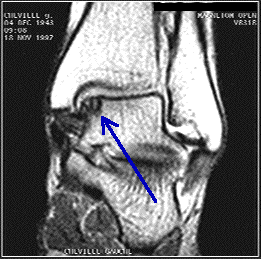Podiatrist? What do they treat?
We treat the legs, ankles, and feet. Here is a quick list of common problems that we want you to know so that you can get back on track to
healthy toes, feet, ankles, & legs.
healthy toes, feet, ankles, & legs.
Dr. Pulapaka gave a lecture recently at the DeLand Public Library on "Podiatry Principles", discussing what a podiatrist treats. Below are a few of the highlights.
1. You have a wound on your leg, foot or toe that is not healed in 2 days.
1. You have a wound on your leg, foot or toe that is not healed in 2 days.
Wound infection is a common problem. Often patients wait too long before making an appointment hoping the wound will heal. These delays can be costly, and you may put yourself at risk of losing a toe, foot, or your leg, especially if you have vascular disease or diabetes.
2. You feel joint pain in your feet or ankles.
Arthritis is one of the most common conditions affecting Americans. If the joints in your feet are often swollen, red, stiff or tender, see a podiatrist. Arthritis can change the way the feet function and lead to disability. A podiatrist can suggest treatments that may preserve joint health and make it easier for you to carry out your day.
3. You have diabetes.
Diabetes makes you significantly more prone to foot problems. These issues can range from dry skin to serious infections. If you have diabetes, you should have a foot exam performed by a doctor or podiatrist at least once a year. Having a podiatrist as part of your healthcare team lowers the risk of amputation due to diabetes by more than 50%, studies show.
4. Heel pain is limiting your activities.
There are many causes of heel pain. You may have a bony growth on the heel known as a heel spur. Or one of the tendons that connects to the heel may be inflamed. If you have persistent heel pain, see a podiatrist for a diagnosis. He or she will perform a foot exam and may take X-rays. A proper diagnosis is the first step toward developing a treatment plan.
5. You have a stubborn ingrown toenail.
When a toenail grows into the skin, the ingrown nail can cause an infection. Ingrown toenails most often affect the big toe. If a toenail is very red or has lots of drainage, visit a podiatrist for treatment. In some cases, the doctor will remove part of the nail. Your doctor will prescribe medicine if the area is infected.
6. You suspect a sprain, strain, or broken bone.
Podiatrists are experts at treating sprains, strains, and broken bones in the foot or the ankle. They can diagnose your injury and suggest treatment. A podiatrist can also create a flexible cast to help the area heal. Swelling, trouble walking, redness, and increasing pain following an injury are all reasons to see a podiatrist.
7. You need foot surgery.
Surgery is often the last treatment a podiatrist recommends for many foot conditions. Should you need it, however, podiatrists perform surgery on the foot and ankle. Conditions that may require surgery include bunions, recurring ingrown toenails, and broken bones.
8. You have a bothersome corn or callus.
Corns and calluses are some of the most common reasons people visit a podiatrist. These areas of built-up skin can be painful if they get too thick. A podiatrist may recommend cortisone injections to reduce the pain. Another option your doctor has is to reduce their size using a surgical blade. The procedure isn’t painful because the skin is dead.
9. You’re starting to run regularly.
Runners are especially prone to aches and pains like shin splints. A podiatrist can assess your body and feet to flag potential problems and recommend strategies to avoid them. He or she can also recommend the best type of athletic shoe for your foot.
10. You think you have athlete’s foot—and it isn’t going away.
The fungal infection known as athlete’s foot can make the skin between your toes look scaly and feel itchy. Over-the-counter antifungal cream may help. But if the infection doesn’t seem to improve after a couple of weeks, visit a podiatrist. Oral and cream-based prescription medicines are often more effective. Your doctor will also check for signs of a bacterial infection, which requires antibiotics.

